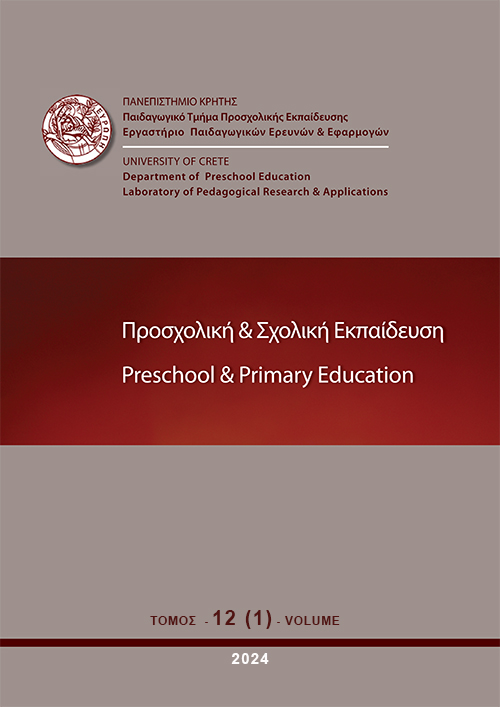The importance of name writing for the emergence of literacy
Abstract
The present study, which is part of a broader longitudinal case study, aims to imprint the developmental course of a child learning to write his/her name during the phase of first literacy and the influence of this learning process on the emergence of the child’s writing skills. The study focuses on the in-depth analysis of the written products of a high social level boy, Andreas, examining the period since his birth until his entrance in primary school. The assessment of the results showed a satisfying delineation of his development until he learned the acceptable written form of his name and highlighted the pivotal role of Andreas' learning of writing his own name for the acquisition of alphabetic code.
Article Details
- How to Cite
-
Galanis, G., & Stellakis, N. (2024). The importance of name writing for the emergence of literacy. Preschool and Primary Education, 12(1), 87–113. https://doi.org/10.12681/ppej.34794
- Section
- Articles

This work is licensed under a Creative Commons Attribution-NonCommercial-ShareAlike 4.0 International License.
Authors who publish with this journal agree to the following terms:
- Authors retain copyright and grant the journal right of first publication with the work simultaneously licensed under a Creative Commons Attribution Non-Commercial License that allows others to share the work with an acknowledgement of the work's authorship and initial publication in this journal.
- Authors are able to enter into separate, additional contractual arrangements for the non-exclusive distribution of the journal's published version of the work (e.g. post it to an institutional repository or publish it in a book), with an acknowledgement of its initial publication in this journal.
- Authors are permitted and encouraged to post their work online (preferably in institutional repositories or on their website) prior to and during the submission process, as it can lead to productive exchanges, as well as earlier and greater citation of published work (See The Effect of Open Access).



